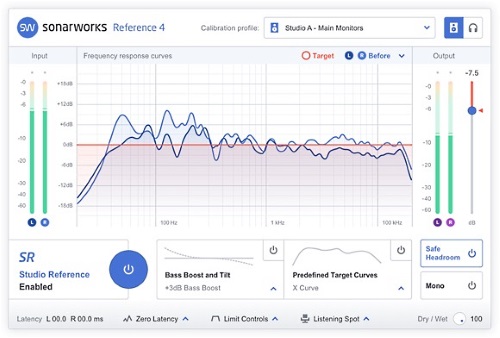


Of course, the analyser needs to be fed a signal from a suitable measurement mic, and it needs to know that mic’s frequency response in order to properly compensate for it during the analysis. The analyser is used to measure the sound at the listening position, while the correction plug-in, inserted into your DAW’s main mix or monitor output path, uses that measured response to create and apply a corrective EQ curve.
Sonarworks reference 4 without mic software#
One such solution is IK Multimedia’s ARC System, recently upgraded to its third iteration.Īt the heart of the ARC System 3 package are two software components: an analyser application and a correction plug-in. Performing this procedure manually is without doubt a painstaking, fiddly and time-consuming process, which is why many people reach for automated solutions. With the analyser revealing the frequency response at the listening position, you can tune out the inaccuracies using a 1/3-octave graphic EQ (a graphic EQ with more than 30 bands) inserted into the monitor signal path. This involves playing sounds through the monitors –typically white noise and/or sine waves at specific frequencies – while capturing and analysing the results using a special measurement mic hooked up to a spectrum analyser. There’s a lot to think about.įixing these inaccuracies involves a procedure known as room calibration. The peculiarities of the room and the materials it’s made from will cause some frequencies to be weakened while others are accentuated, and this pattern of sonic colouration will vary depending on your position as a listener.
Sonarworks reference 4 without mic drivers#
Your room’s acoustics have almost as much impact on the accuracy of what you hear as the monitor drivers themselves. Should your monitors be weak in the low end, for example, you might over-boost low-end EQ to compensate, resulting in a mix that seems bottom-heavy when heard on other systems.Īccurate monitoring isn’t all about the monitors themselves though. If your monitoring is inaccurate, your judgements will be based on false information, and will invariably be poor decisions as a result. It’s what all your judgements are based on. Your studio monitoring system is the window through which you hear everything.


 0 kommentar(er)
0 kommentar(er)
